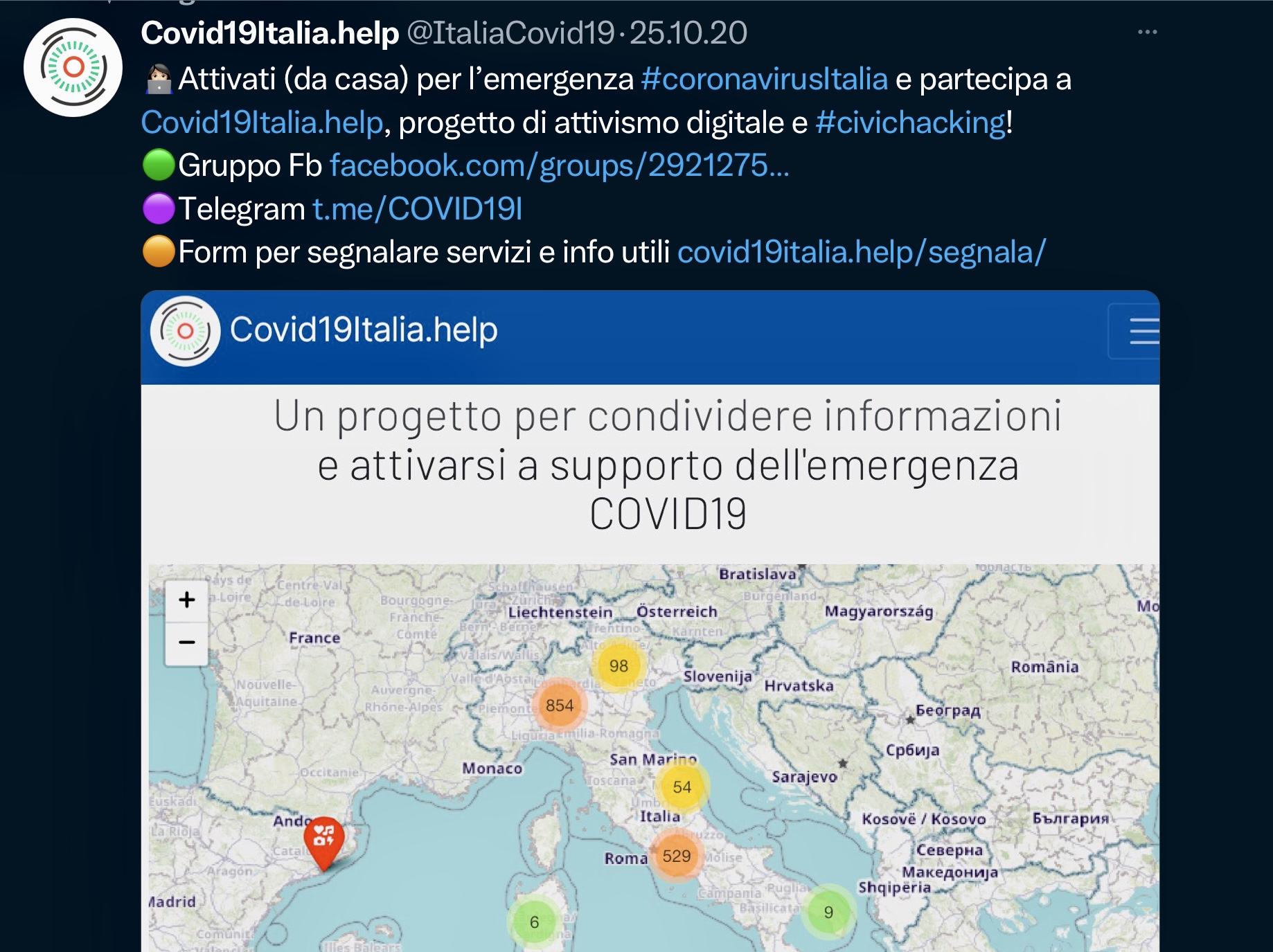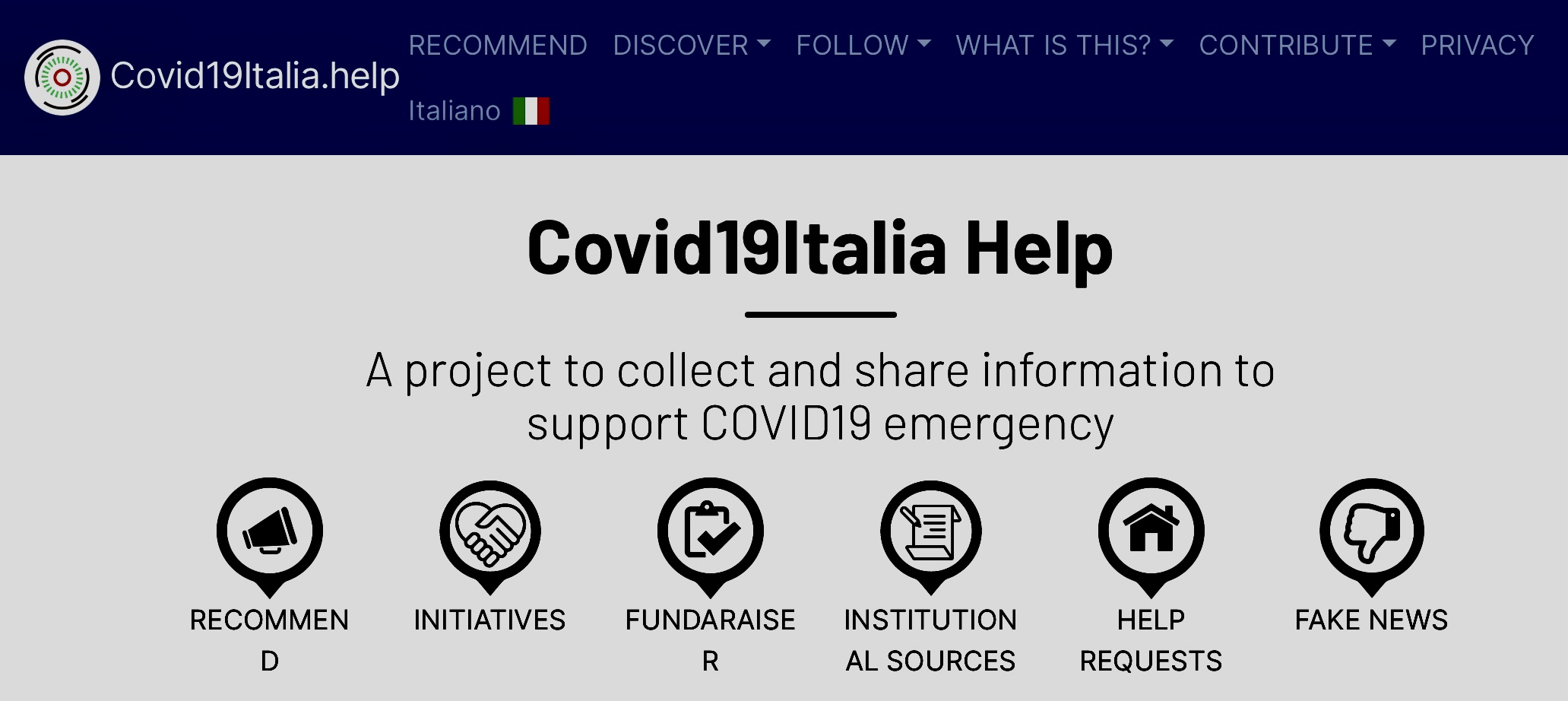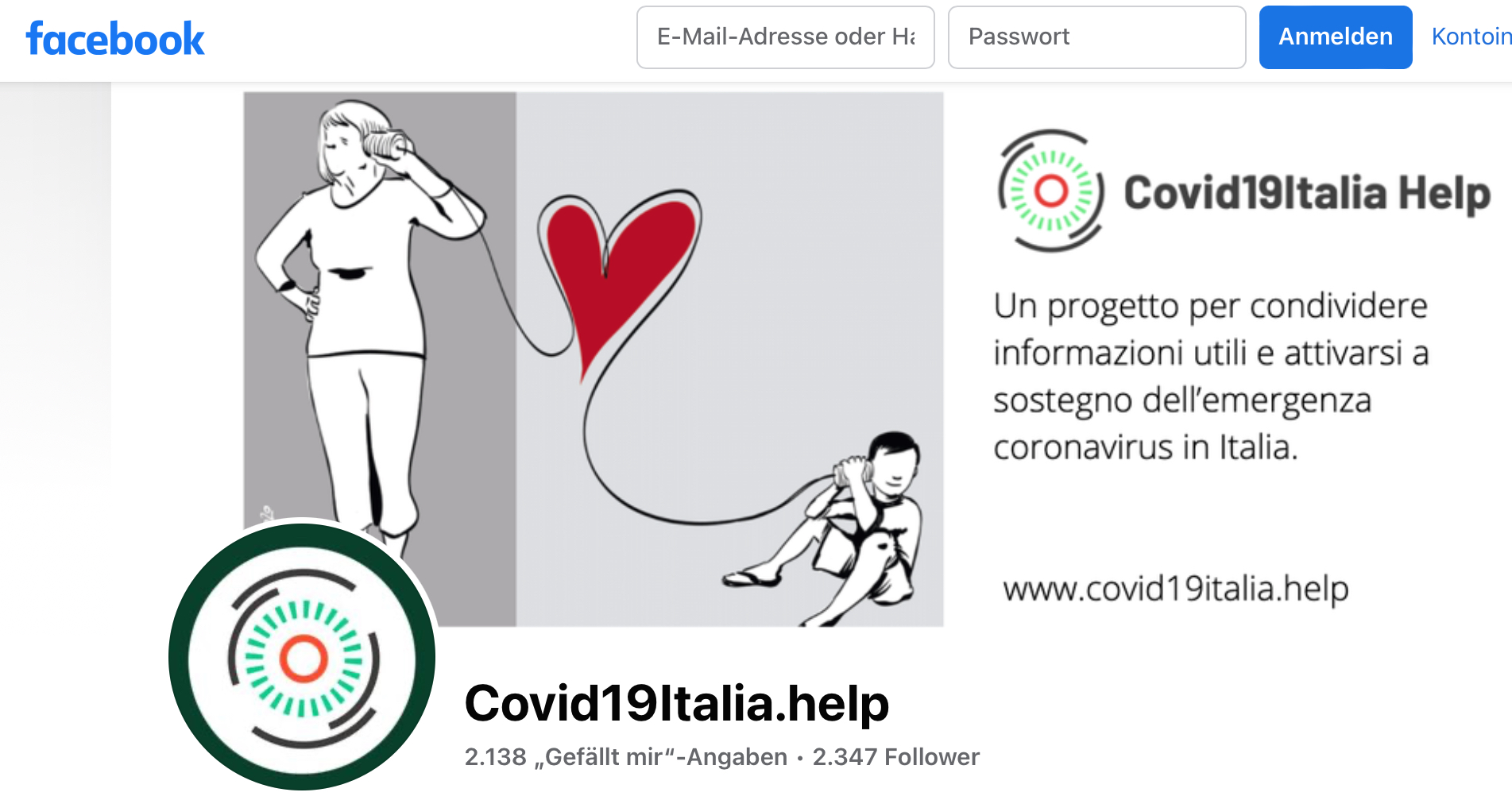COVID-19 Support Platform, Italy: Difference between revisions
From LINKS Community Center
Roxana (talk | contribs) No edit summary |
Roxana (talk | contribs) No edit summary |
||
| Line 2: | Line 2: | ||
|Use Cases Category=Real-world | |Use Cases Category=Real-world | ||
|Year=2020 | |Year=2020 | ||
|Publishing Organisation=Ubiquiti Networks (UNIFI) | |||
|Location=Italy | |Location=Italy | ||
|Event type=Pandemic | |Event type=Pandemic | ||
| Line 13: | Line 14: | ||
|Used hashtags=#covid19, #coronavirus | |Used hashtags=#covid19, #coronavirus | ||
|Long description=From January 2020, the coronavirus started to spread in Italy and from March 2020, the ban on leaving and moving around the area was imposed. From then on, most activities were stopped and shops were closed (only the supermarket, the grocery shop and the main shops could stay open). This led to a number of problems, mainly because it took a couple of months for most activities and shops to reopen and start operating again, leading to major economic problems. As a result of lifting the ban, many people became infected with the virus, which led to an overload in hospitals. Therefore, many patients could not be cared for causing a high death-rate. To support people in need of urgent help, a group of computer technicians founded this platform. | |Long description=From January 2020, the coronavirus started to spread in Italy and from March 2020, the ban on leaving and moving around the area was imposed. From then on, most activities were stopped and shops were closed (only the supermarket, the grocery shop and the main shops could stay open). This led to a number of problems, mainly because it took a couple of months for most activities and shops to reopen and start operating again, leading to major economic problems. As a result of lifting the ban, many people became infected with the virus, which led to an overload in hospitals. Therefore, many patients could not be cared for causing a high death-rate. To support people in need of urgent help, a group of computer technicians founded this platform. | ||
|Involved Organisations=IT Experts | |||
|Use cases thematic=Collecting and Analysing Information from SMCS, Ensuring Credible Information, Making Information Accessible | |Use cases thematic=Collecting and Analysing Information from SMCS, Ensuring Credible Information, Making Information Accessible | ||
|Limitations=There were two main problems with the platform: the occurance of fake news and disinformation, and the overly strict rules for accessibility of the platform. | |Limitations=There were two main problems with the platform: the occurance of fake news and disinformation, and the overly strict rules for accessibility of the platform. | ||
|Worked well=Like the TerremotoCentroItalia platform, the Covid-help-platform has proven itself. The platform is easy and intuitive to access, as there are only a few sections which are clearly separated and easy to understand. To minimise the risk of disinformation and the spread of fake news, the "Fake News" section identifies false information. Additionally, the information provided on the platform has been verified before it is published. The idea of dividing the warning by region has proven helpful in making it easier for people to find the information they need and to create specific maps for the region they are interested in. One highly beneficial aspect of the platform is the dissemination of official information about what to do in certain situations and what has happened. | |Worked well=Like the TerremotoCentroItalia platform, the Covid-help-platform has proven itself. The platform is easy and intuitive to access, as there are only a few sections which are clearly separated and easy to understand. To minimise the risk of disinformation and the spread of fake news, the "Fake News" section identifies false information. Additionally, the information provided on the platform has been verified before it is published. The idea of dividing the warning by region has proven helpful in making it easier for people to find the information they need and to create specific maps for the region they are interested in. One highly beneficial aspect of the platform is the dissemination of official information about what to do in certain situations and what has happened. | ||
|Additional links=https://www. | |Additional links=https://it.wikipedia.org/wiki/Pandemia_di_COVID-19, https://twitter.com/italiacovid19, https://www.facebook.com/covid19italia.help/, https://www.instagram.com/covid19italia.help/, https://www.fondazioneveronesi.it/magazine/articoli/da-non-perdere/covid-19-la-pandemia-in-10-date-da-ricordare, https://www.repubblica.it/cronaca/2020/02/22/news/coronavirus_in_italia_aggiornamento_ora_per_ora-249241616/ | ||
|Other images=covid_italy_1.jpeg, covid_italy_2.jpeg, covid_italy_3.jpeg, covid_italy_4.jpeg | |Other images=covid_italy_1.jpeg, covid_italy_2.jpeg, covid_italy_3.jpeg, covid_italy_4.jpeg | ||
}} | }} | ||
Latest revision as of 13:12, 17 October 2023
Created: 16 March 2023
Last edited: 17 October 2023
Last edited: 17 October 2023
Covid19Italia.Help is an opensource and open access platform created in the first days of the pandemic with the aim to disseminate information related to the pandemic and to support people in need.
Hazard:
PandemicYear:
2020Location:
ItalyScale:
CountryInvolved Organisations:
IT ExpertsPublishing Organisation
Ubiquiti Networks (UNIFI)
Category
Real-world
Theme
Crowdsourcing, Social Media
Thematic
- Collecting and Analysing Information from SMCS
- Ensuring Credible Information
- Making Information Accessible
Disaster Management Phase
After, During
Description
From January 2020, the coronavirus started to spread in Italy and from March 2020, the ban on leaving and moving around the area was imposed. From then on, most activities were stopped and shops were closed (only the supermarket, the grocery shop and the main shops could stay open). This led to a number of problems, mainly because it took a couple of months for most activities and shops to reopen and start operating again, leading to major economic problems. As a result of lifting the ban, many people became infected with the virus, which led to an overload in hospitals. Therefore, many patients could not be cared for causing a high death-rate. To support people in need of urgent help, a group of computer technicians founded this platform.What worked well and could be recommended to others?
Like the TerremotoCentroItalia platform, the Covid-help-platform has proven itself. The platform is easy and intuitive to access, as there are only a few sections which are clearly separated and easy to understand. To minimise the risk of disinformation and the spread of fake news, the "Fake News" section identifies false information. Additionally, the information provided on the platform has been verified before it is published. The idea of dividing the warning by region has proven helpful in making it easier for people to find the information they need and to create specific maps for the region they are interested in. One highly beneficial aspect of the platform is the dissemination of official information about what to do in certain situations and what has happened.What limitations were identified?
There were two main problems with the platform: the occurance of fake news and disinformation, and the overly strict rules for accessibility of the platform.Which social media and crowdsourcing technologies were used?
- OpenStreetMap
- GitHub
Which hashtags or keywords were used?
#covid19, #coronavirusAdditional Links
- https://it.wikipedia.org/wiki/Pandemia_di_COVID-19
- https://twitter.com/italiacovid19
- https://www.facebook.com/covid19italia.help/
- https://www.instagram.com/covid19italia.help/
- https://www.fondazioneveronesi.it/magazine/articoli/da-non-perdere/covid-19-la-pandemia-in-10-date-da-ricordare
- https://www.repubblica.it/cronaca/2020/02/22/news/coronavirus_in_italia_aggiornamento_ora_per_ora-249241616/




